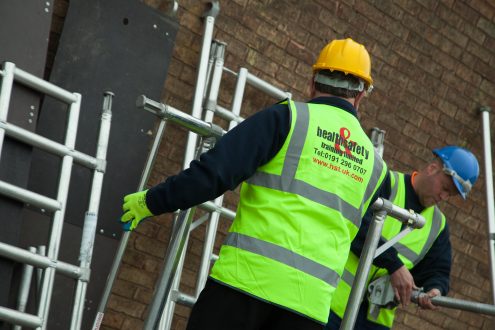How Safe is Scaffolding?
Scaffolding is the solution to many access issues, providing a safe and legal means of access for workers at height. It is recommended above many other means of access, especially if the work will be prolonged or involve multiple workers, tools, equipment or materials.
However, scaffolding is not completely safe. The National Access & Scaffolding Confederation (NASC) produce an annual safety report on the number of accidents and injuries in each year, among member companies. The NASC 2015 reports that, in 2014, there were no fatalities as a result of scaffolding accidents or falls. However, the total number of accidents had risen 9% from the previous year to 105, with 24 falls from height.
Each of these reported accidents could have easily been fatal if the correct safety precautions had not been in place.
Scaffolding Rules
To keep workers safe the government have published a set of scaffold rules that companies who utilise scaffolding must follow:
- Only properly trained and competent scaffold contractors can be used to set up scaffold towers and structures
- It is the responsibility of that contractor to obtain the relevant and correct licences for the scaffold to be put up on public highways or pavements
- However, it is the responsibility of the company employing the scaffolders to check they have the correct legal licence, and that it is in date and will not expire before the end of the work
- If the scaffold will be put up in a public place, the company should schedule all work to be carried out during quieter times, when the risk to passers-by will be lower
- Once established, all scaffolding should be thoroughly inspected before it is used. After this, it should be inspected at least every 7 days, and after any alterations to the structure or extreme weather conditions
Work at Height Regulations 2005
Of course there are other rules and regulations that apply to keeping workers on scaffolding safe, the most relevant of which is the Work at Height Regulations 2005. This states that only trained, competent people should be asked to carry out tasks at height, such as on scaffold, and that there are precautions that should be in place to prevent falls or accidents. This includes two types of protection:
Collective protection: This is protection that considers the risks to everyone, not just the workers, and does not require action to be effective. For example, safety netting to catch falling objects and guard rails.
Personal protection: These are measures taken to protect the individuals, and requires an action to be effective. For example, workers being supplied with the correct type of safety harness, and ensuring it is properly worn and connected to an anchor point.
Health and Safety Training Ltd
Here at Health and Safety Training, we have years of experience providing tailored training courses for a variety of specific risks. As such we can offer:
- An IPAF accredited safety harness use and inspection course, to ensure your scaffold workers can ensure their personal protection
- A PASMA accredited mobile scaffold tower course to ensure any employees involved in the assembly, alteration or dismantling of scaffold towers are trained to a competent level
Risk assessment training that will help your workers to identify and assess risks and hazards, such as risks from working on or around scaffold, and take adequate steps to report or avoid these risks.
To find out more, or speak to a member of our team about training that will keep your scaffold workers safe on the job, simply give us a call today.
How to cope with mental illness in the workplace What are the different types of Mobile Elevated Working Platforms (MEWPs)






